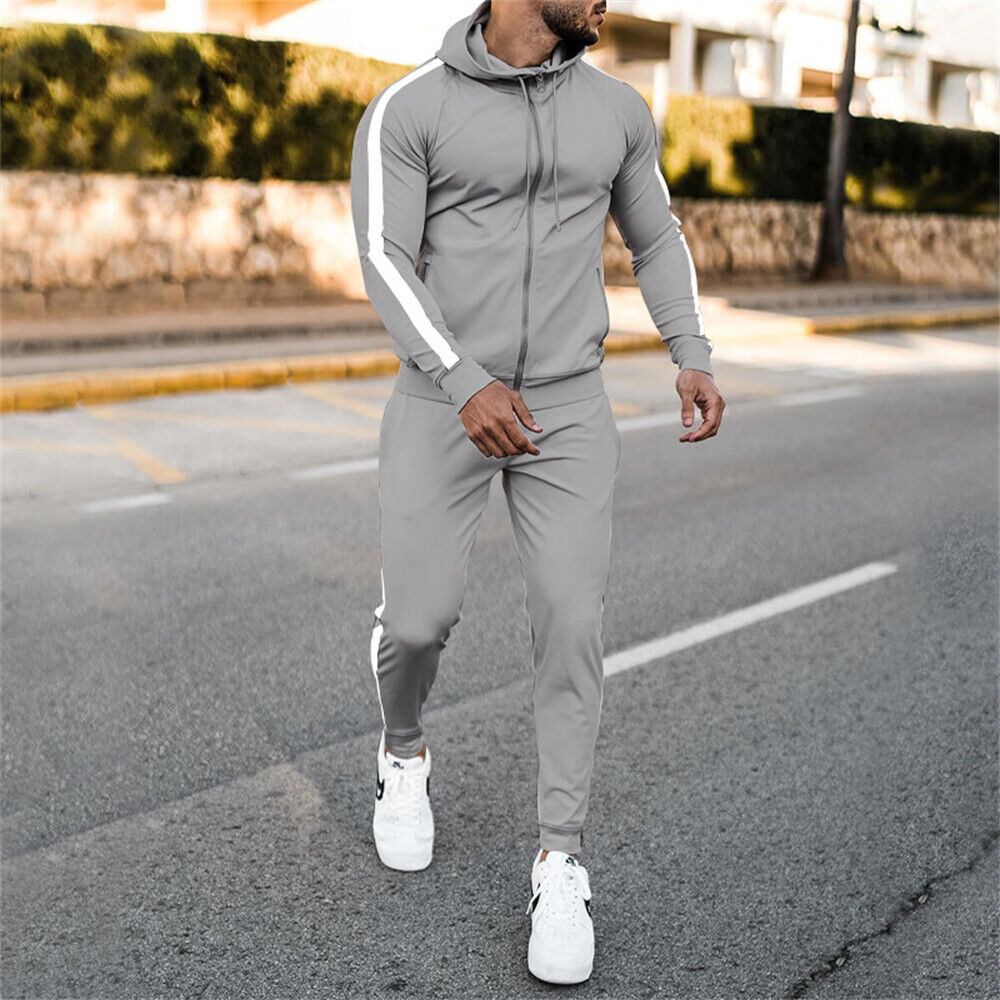Sweat suits, also known as tracksuits or training suits, have become a staple in the world of athletic and casual wear. They are not only comfortable and stylish but also versatile for a variety of activities, from working out at the gym to lounging at home. However, with a wide range of materials to choose from, it can be challenging to pick the right sweat suit fabric that suits your needs. This article explores different sweat suit fabrics, their properties, and how to choose the best material for your specific requirements.
Cotton Sweat Suits
Cotton sweatsuits are a popular choice among athletes and casual wear enthusiasts for several reasons:
Comfort: Cotton is known for its softness and breathability, making it extremely comfortable to wear. It allows your skin to breathe and prevents excessive sweating, making it ideal for light workouts or casual wear.
Durability: Cotton is a sturdy fabric, and high-quality cotton sweat suits can withstand regular washing and wear.
Absorbency: Cotton readily absorbs moisture, making it an excellent choice for activities that involve sweating. It can help keep you dry and comfortable during workouts.
However, it’s important to note that cotton sweat suits may not be the best choice for intense workouts or sports that require moisture-wicking properties, as cotton can become heavy and uncomfortable when soaked in sweat.
Polyester Sweat Suits
Polyester is another commonly used material for sweat suits. It offers several advantages:
Moisture-Wicking: Polyester is known for its moisture-wicking properties. It draws sweat away from your body, keeping you dry during intense physical activities.
Lightweight: Polyester spider clothing i lightweight, making them ideal for activities where agility and mobility are important, such as running or aerobics.
Quick Drying: Polyester dries quickly, which is particularly beneficial if you plan to wear your sweat suit for multiple workouts without needing to wash it each time.
However, some people find that polyester is less breathable than cotton, which can lead to discomfort during extended wear. It’s important to choose a polyester sweat suit with proper ventilation to mitigate this issue.
Fleece Sweat Suits
Fleece sweatsuits are a popular choice for cold weather and outdoor activities. Here are some of their key characteristics:
Insulation: Fleece materials are excellent at trapping heat, making them a great option for staying warm during cold workouts or outdoor adventures.
Softness: Fleece is known for its soft and comfortable feel against the skin.
Bulkier: Fleece sweat suits tend to be bulkier and heavier than other options, which can limit their use in warmer conditions or for highly intense workouts.
Spandex or Lycra Sweatsuits
Spandex or Lycra sweatsuits are ideal for those looking for flexibility and a snug fit. They offer the following benefits:
Stretchability: Spandex or Lycra provides excellent stretch, allowing for a wide range of motion during workouts or sports activities.
Compression: These materials provide compression, which can aid in muscle support and recovery.
Form-Fitting: Spandex or Lycra spider sweatsuit are form-fitting and provide a sleek, athletic look.
However, they may not be as breathable as cotton and may not offer the same level of insulation as fleece, so they are best suited for moderate to intense workouts in temperate conditions.
Choosing the Right Sweat Suit Fabric for Your Needs
To select the best sweat suit fabric for your needs, consider the following factors:
Activity Level: If you plan to engage in high-intensity workouts, opt for moisture-wicking materials like polyester or Spandex. For casual wear or light activities, cotton might be more comfortable.
Climate: Consider the weather conditions in which you’ll be wearing your sweat suit. Fleece is great for cold weather, while lightweight materials like polyester or Spandex are better for warmer climates.
Fit: Determine the fit you prefer. If you like a snug, form-fitting look, go for Spandex or Lycra. For a more relaxed fit, cotton or fleece may be the way to go.
Style: Sweat suits come in various styles and designs. Choose a fabric that complements your personal style and preferences.
Budget: Different materials come with varying price tags. Consider your budget and the quality of the sweat suit fabric you can afford.
Selecting the right sweat suit fabric is essential to ensure your comfort and performance during workouts or casual wear. Cotton, polyester, fleece, and Spandex each have their unique properties, making them suitable for different activities and weather conditions. By considering your activity level, climate, fit preference, style, and budget, you can make an informed decision when choosing the perfect sweatsuit fabric for you. Ultimately, the ideal sweat suit is one that meets your specific needs and keeps you looking and feeling great in any situation.







Be First to Comment